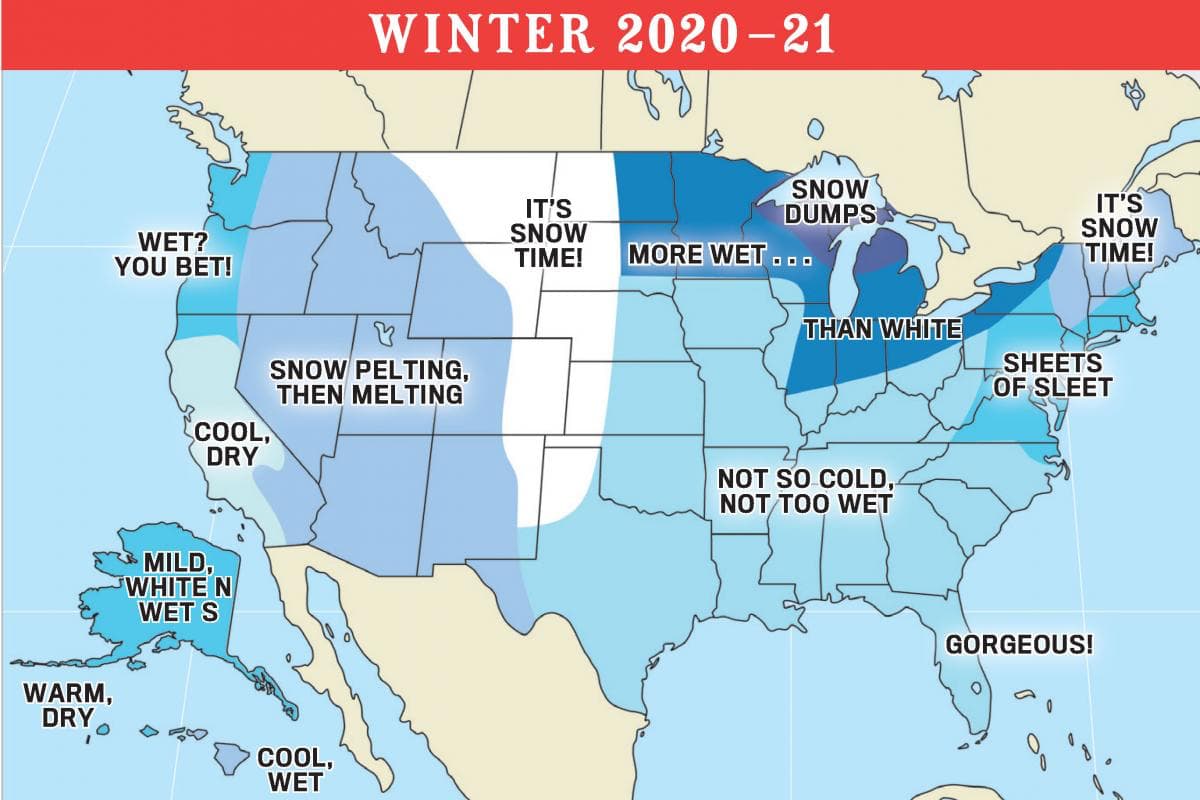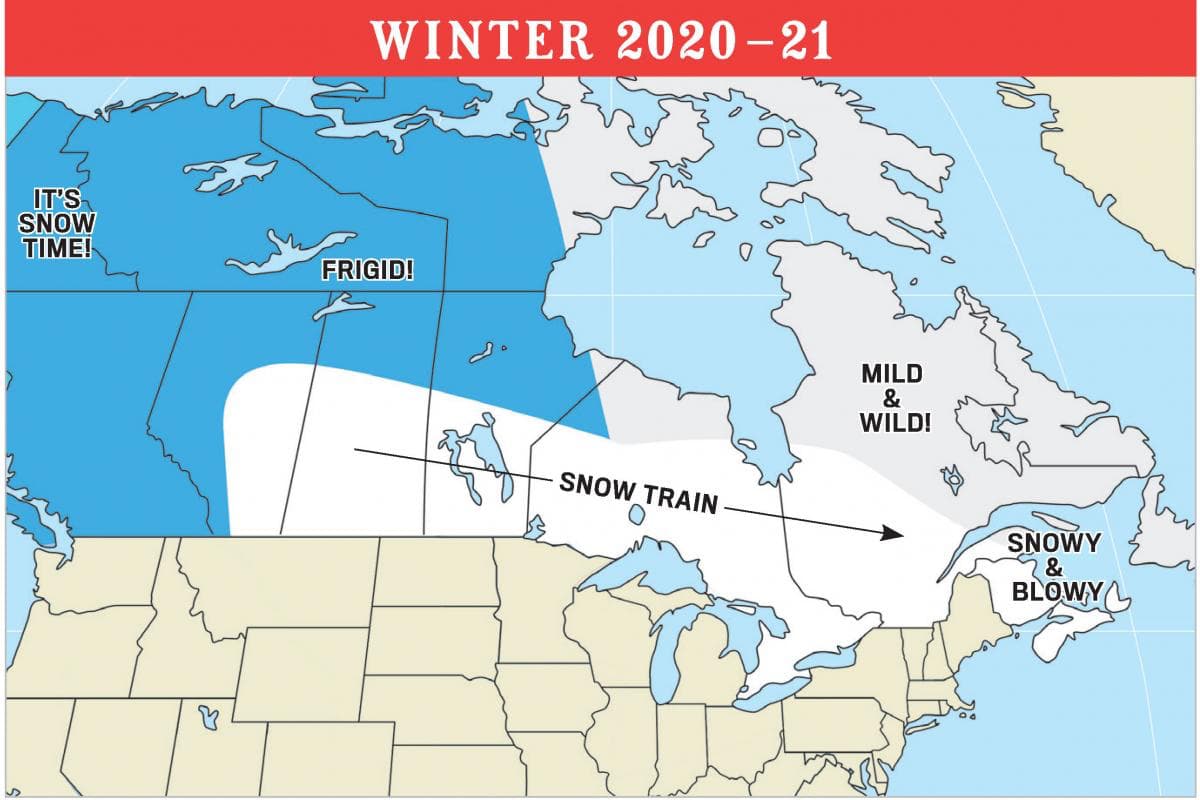
Guess what? It will snow this winter, we can promise you that. Yay! But what we all want to know is, how much? Well, the Old Farmer’s Almanac (not to be confused with the Farmer’s Almanac) has just released its long-range winter weather forecast for the 2020/21 season.
Predicting a light winter, with warmer-than-normal temperatures for the majority of the United States, coupled with average or below-average precipitation, isn’t what we wanted to hear. But it’s not all doom and gloom, some areas will be colder and wetter than others.
According to the Old Farmer’s Almanac, we are currently transitioning from Solar Cycle 24 to Solar Cycle 25. Cycle 24 was the smallest in more than 100 years and possibly the smallest since the Dalton Minimum in the early 1800s, while Cycle 25 is expected to also bring very low solar activity.
Although low levels of solar activity have historically been associated with cooler temperatures, on average, across Earth, they believe that rising temperature trends mean that the winter will not be extremely cold.
For the United States, they predict that recent warming trends will dominate in the eastern and northern parts of the United States in the coming winter, with below-normal average temperatures limited to the western portion of the nation. Most of Canada will have a cold and snowy winter. However, rising temperature trends mean that the winter will not bring extreme cold; instead, it will be closer to normal.
Check out their brief summary for the US below (map above):
If you were hoping for a reprieve from harsh winter weather this year, we have some news that just might make you smile. We’re predicting a light winter for most of us here in the United States, with warmer-than-normal temperatures in the forecast for a large part of the country.
Uncommonly chilly temperatures will be limited mostly to the western states and northeastern New England. Specifically, winter will be colder than normal in Maine; the Intermountain, Desert Southwest, and Pacific Southwest regions; and eastern Hawaii and above normal elsewhere.
On the precipitation side of things, expect “wet” to be a wintertime constant, with rain or average to below-average snowfall to be the standard throughout most of the country.
Specifically, precipitation will be below normal from Delmarva into North Carolina; in the southern Appalachians, Georgia, and Florida from the Ohio Valley westward to the Pacific and southward to the Gulf and Mexico; and in western Hawaii and above or near normal elsewhere.
Snowfall will be greater than normal in the Northeast, Wisconsin, Upper Michigan, the High Plains, and northern Alaska and below normal in most other areas that receive snow.

The brief summary for Canada is below:
The 2021 Old Farmer’s Almanac Canadian Edition is calling for below-normal winter temperatures through most of the country. However, it’s still winter and expect frigid and frosty weather!
The exception will be in Atlantic Canada and the Prairies, which will experience above-normal temperatures.
Precipitation will be above normal in all of the Commonwealth. Snowfall will be much greater than normal from Quebec westward through most of the Prairies and close to normal elsewhere.
So, while the Atlantic Canada and the Prairies may feel some relief from winter’s chill, they–like the rest of the country—will see lots of rain, snow, and sleet.
Areas from Alberta eastward to Quebec should brace for a virtually continual “Snow Train” that will be carrying a series of winter storms throughout the season.
How Does the Almanac Predict the Weather?
As is tradition, The Old Farmer’s Almanac employs three scientific disciplines to make long-range predictions: solar science, the study of sunspots and other solar activity; climatology, the study of prevailing weather patterns; and meteorology, the study of the atmosphere. They predict weather trends and events by comparing solar patterns and historical weather conditions with current solar activity.
Their forecasts emphasize temperature and precipitation deviations from averages or normals. These are based on 30-year statistical averages prepared by government meteorological agencies. Read more about How They Predict the Weather.
How Accurate Are the Almanac’s Forecasts?
Neither they nor any other forecasters have as yet gained sufficient insight into the mysteries of the universe to predict the weather with total accuracy, their results are almost always very close to their traditional claim of 80%.
How accurate was their forecast last winter? See their 2019-2020 winter forecast summary.